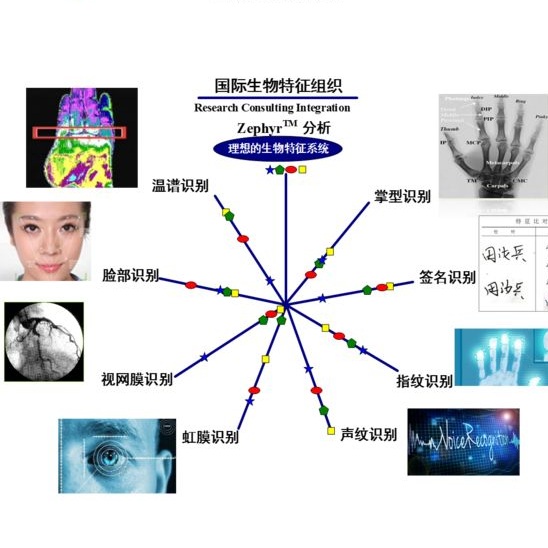项目名称: 基于手掌电阻抗谱多频率同步测量的生物特征识别新方法
项目编号: No.61273271
项目类型: 面上项目
立项/批准年度: 2013
项目学科: 自动化技术、计算机技术
项目作者: 杨宇祥
作者单位: 西安理工大学
项目金额: 81万元
中文摘要: 生物特征识别是最具潜力的身份认证技术,但当前生物特征识别技术大多基于二维或三维的图像特征,在防伪性、无创性、便捷性和低成本之间不能兼顾,普及性仍受制约。本项目首次提出手掌的电阻抗谱(BIS)特性是一种新的生物特征,研究包括:采用最大长度序列作为激励源,提出基于系统相关辨识原理的BIS多频率同步快速测量方法;研究快速测量算法,构建手掌BIS测量系统实现海量频率点阻抗的快速测量;以实验获得的手掌BIS数据作为原始特征,研究基于免疫克隆算法的特征选择方法获得原始特征的最优特征子集,设计基于隐空间支持向量机的分类器,并通过自助抽样法评估分类器性能,最终建立基于手掌BIS测量的生物特征识别新方法,为进一步研制相应的生物特征识别设备奠定理论和技术基础。这种基于电阻抗谱(非图像)特征的生物特征识别方法具有防伪性强、无创、便捷、廉价等突出优点,有望成为现有生物特征识别方法的重要补充,具有重要的研究价值。
中文关键词: 生物电阻抗谱;生物特征识别;系统相关辨识;多频率正弦信号;手指感应容抗谱
英文摘要: Biometrics has been considered as the most potential identity authentication technology. But the current biometrics technologies, which are generally based on 2D or 3D image feature, could not reach a balance among anti-falsification, usability, non-invasiveness and cost, so that their popularization is still restricted. This project points out that the bio-impedance spectroscopy (BIS) of human palm is a new biometric feature. The researches in this project include: Firstly, the Maximum Length Sequence (MLS) is adopted as the excitation signal, and a new multi-frequency synchronized measurement of BIS method based on the principle of system correlation identification is proposed, which could realize BIS measurements at mass frequency points in a short time. Secondly, the fast algorithm will be studied, and a new BIS measurement system will be established based on the proposed method, through which, large number of palm BIS sample data will be acquired from many volunteers. Thirdly, the Immune Clonal Selection Algorithm is adopted to achieve the optimal feature subset, and a classifier based on Hidden Space Supporting Vector Machine Algorithm will be designed, whose performance will be evaluated by the Bootstrap. Ultimately, the biometric recognition mechanism based on palm BIS measurements will be established, w
英文关键词: bioimpedance Spectroscopy (BIS);biometric identification (BI);system correlation identification;multisine;finger induced capacitance spectroscopy (CRS)
